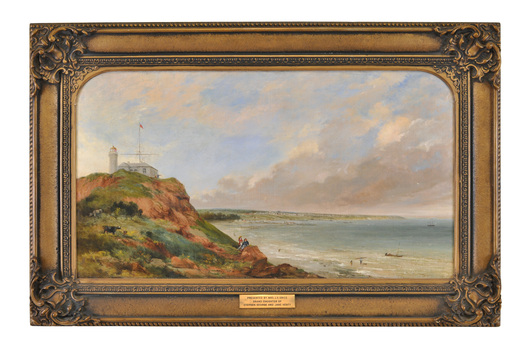Historical information
Thomas Clark began his career as an artist in England in the mid-1800s. He specialised in drawing and went on to teach at the Birmingham School of Design. In 1851 he left England, and it is thought that he travelled to Russia possibly to undertake an engraving commission for the Tsar. From there he travelled to Melbourne, Australia.
In Australia Clark established his reputation as an artist and began painting landscapes. By 1862 the Ballarat Star reported the exhibition of several of his paintings and refers to him as, ‘an artist of eminence in Melbourne’.
In 1870 Clark was appointed as the drawing master of the National Gallery School of Design where he taught several prominent Australian artists – Tom Roberts and Fred McCubbin.
Clark spent most of his time in Melbourne. He did, however, travel to the Western District twice – once to undertake a commission and another time on a sketching trip. It is during one of these trips that he most likely painted Portland Bay.
Portland Bay is thought of as one of Clark’s most appealing paintings . It is also fascinating because it depicts a view of Portland Bay both before the establishment of the harbour in the 1950s and prior to the lighthouse being moved in the late 1800s. This view is from Battery Point and shows the Portland Lighthouse before it was moved. It is now on the other side of the bay on Whaler’s Bluff.
Physical description
View of Portland Bay with a bluff in foreground left. On top of bluff is a lighthouse and a white cottage. Lighthouse is white with a red roof. Cottage has a tall flagpole flying a red flag. Two figures stand in front of cottage. Below bluff are two further figures looking out to see. In background right is a town and harbour. Further figures can be seen on the beach. Framed in ornate gilded frame.
Inscriptions & markings
Front: (no inscriptions)
Plaque on frame read: "PRESENTED BY MRS. J.E. GRICE
GRAND DAUGHTER OF
STEPHEN GEORGE AND JANE HENTY."
Back: (unknown)
Mounting & framing
Framed in ornate gilded frame




